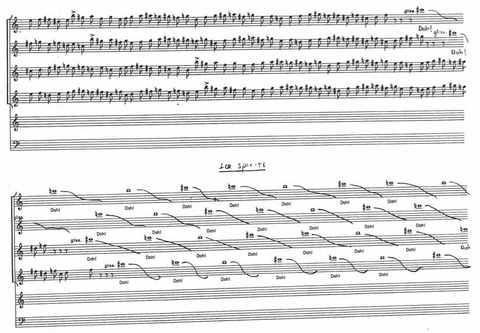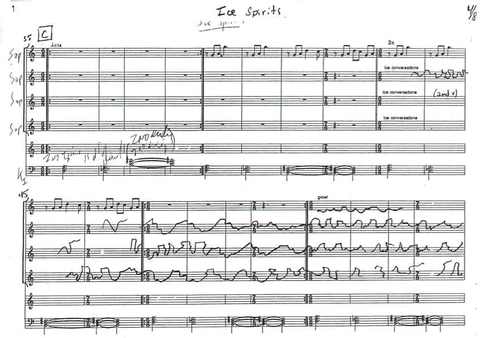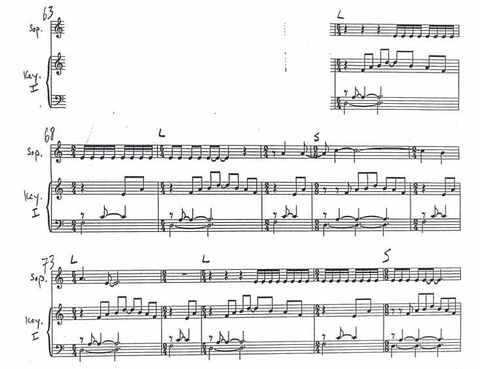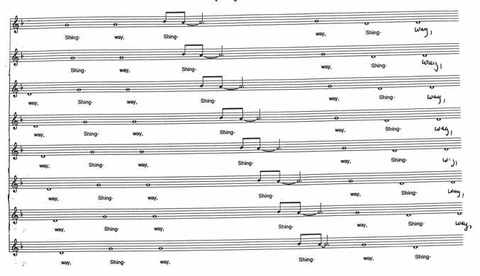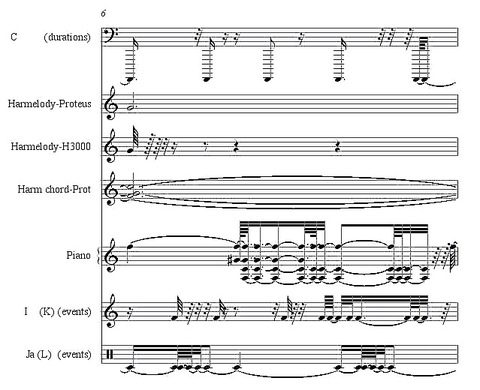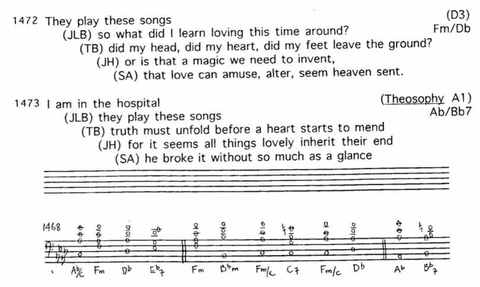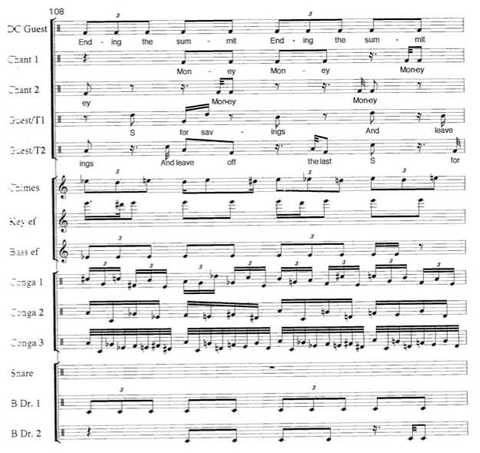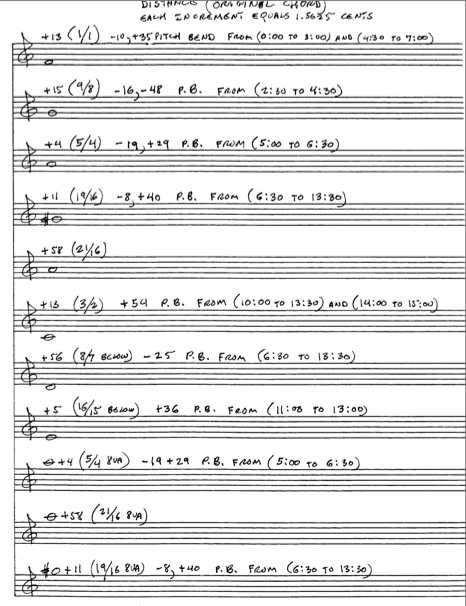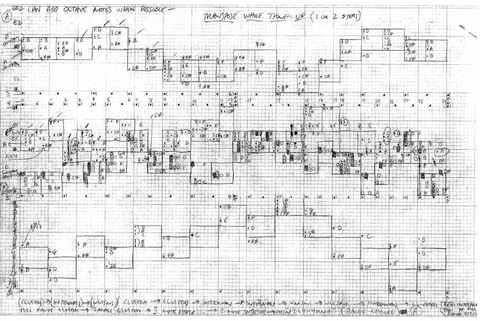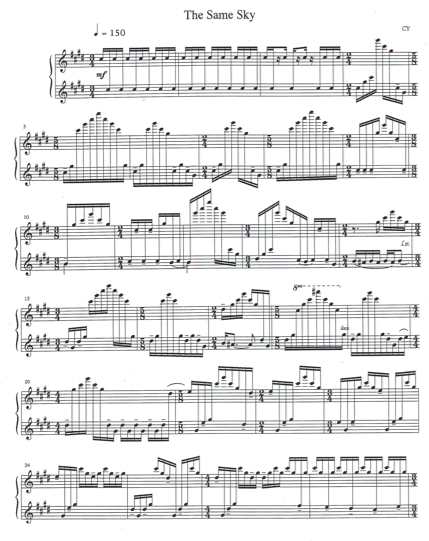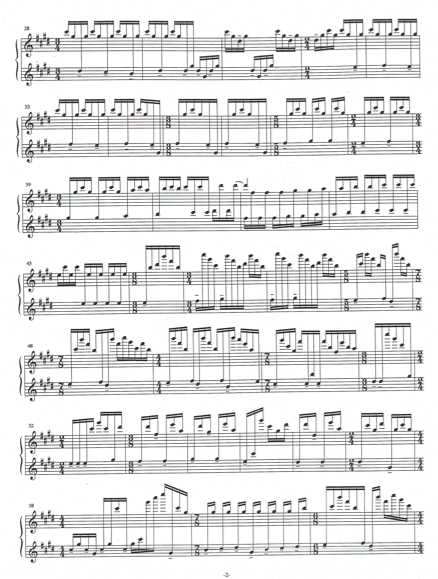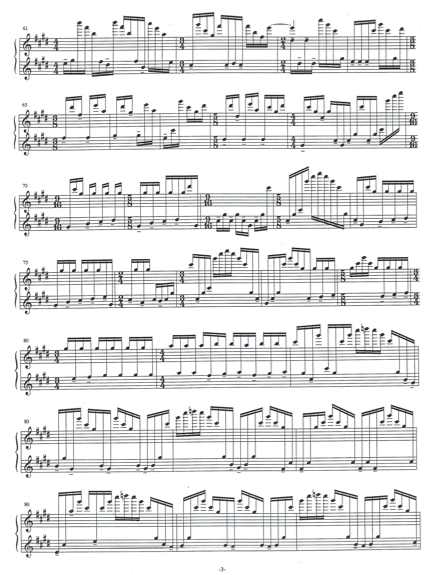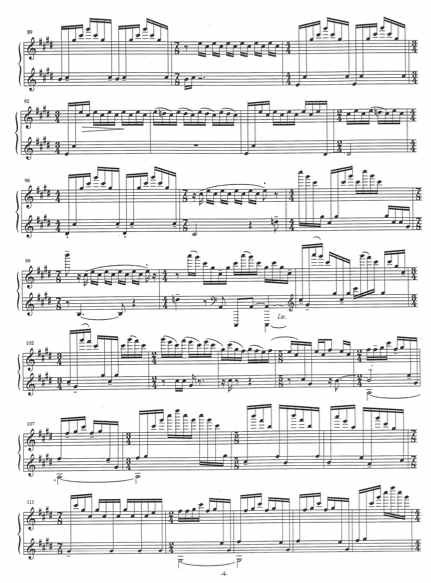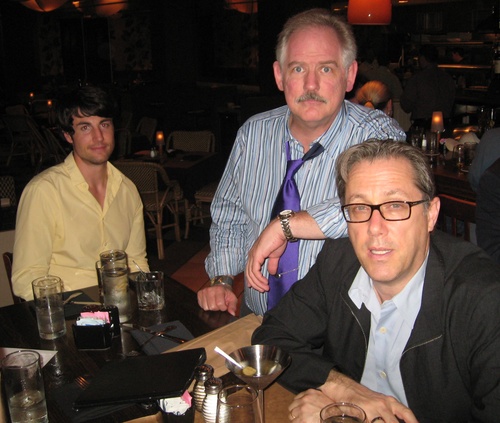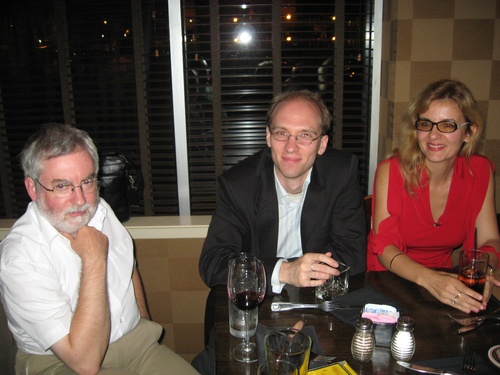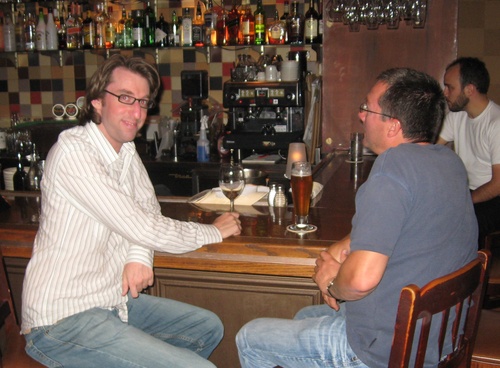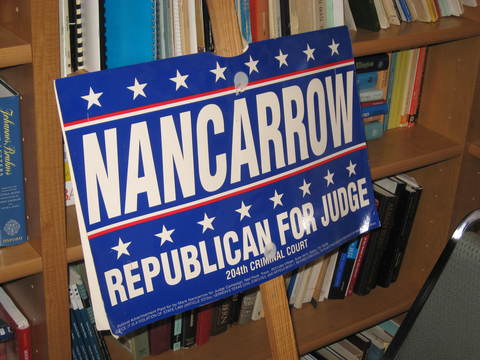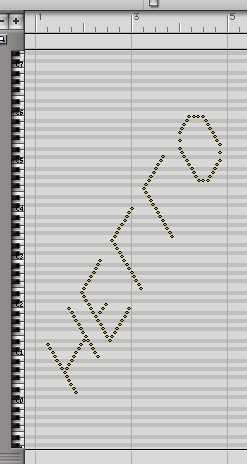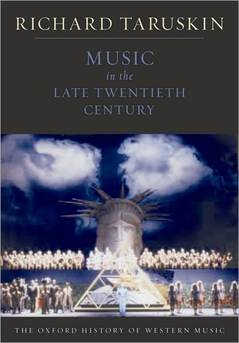 My summer hobby, as it turns out, pursued in-between writing a string quartet and finishing my Ashley book, will be relearning the history of music at the feet of Richard Taruskin. That is, from his five-volume Oxford History of Western Music. I should have bought it earlier, and I know what a brilliant writer he is, but I thought it would be full of things I already knew, perhaps kind of a super-Grout (and no former music student will need to be told that I am referring to Donald J. Grout’s omni-required and stultifying A History of Western Music). But, stuck in New York City recently without my Kindle and with a few hours to kill, I bought Taruskin’s Volume Five, Music in the Late Twentieth Century, and learned within minutes how groundless any such fears were. It is a thorough and creative rethinking of all of Western music. I could hardly put it down, and weeks later, going backwards, I’m halfway through Volume Four.
My summer hobby, as it turns out, pursued in-between writing a string quartet and finishing my Ashley book, will be relearning the history of music at the feet of Richard Taruskin. That is, from his five-volume Oxford History of Western Music. I should have bought it earlier, and I know what a brilliant writer he is, but I thought it would be full of things I already knew, perhaps kind of a super-Grout (and no former music student will need to be told that I am referring to Donald J. Grout’s omni-required and stultifying A History of Western Music). But, stuck in New York City recently without my Kindle and with a few hours to kill, I bought Taruskin’s Volume Five, Music in the Late Twentieth Century, and learned within minutes how groundless any such fears were. It is a thorough and creative rethinking of all of Western music. I could hardly put it down, and weeks later, going backwards, I’m halfway through Volume Four.
Volume Five’s opening chapter is the most transcendent music history writing I’ve ever read, along with Rosen’s The Classical Style – and possibly above it.
He starts with the bombing of Hiroshima, using it as a grand metaphor for what he calls “Zero Hour” – the attempted total redefinition of music at Darmstadt. And yet, he brilliantly juxtaposes this with the Zhdanovshchina, the official rebuke that Zhdanov made to Soviet composers like Shostakovich and Prokofiev, calling on them to eschew abstraction and write accessible music using folk
tunes. Through several long chapters Taruskin charts the century’s most amazing
musical paradox: that under a totalitarianism that mandated simple, melodic
music, the mechanical algorithms of total serialism came to represent freedom.
And at the same time, on the Western side of the Iron Curtain, total serialism
came to express mankind’s existential despair in the face of the possibility
of nuclear annihilation. What a head trip!
For instance, here he is on Stefan Wolpe, whose early music was often political
agitprop:
[Wolpe’s thorny late] music no longer communicates with the directness of a Kampflied. A listener would be hard-pressed to paraphrase its “message,” or guess its precise motivation, with any confidence. But if it thus frustrated willing listeners, it also frustrated would-be censors, and that may well have been the
point. The hermeticism of Wolpe’s postwar – or rather, Cold War – music was a
deliberate and demonstrative refusal to comply with the directives of the
Zhdanovshchina. And yet, the question nags, how did an artist with Wolpe’s
social conscience feel about a decision, however honestly arrived at, to
insulate his artistic integrity within a music that eventually became so
abstract that its content would be a riddle, its style so advanced that few
except fellow musicians could take pleasure in it, and so demanding of its
performers that almost no one could play it? [p. 14]
Adorno, he says, in his Philosophie der neuen Musik,
added an existentialist argument to the older doctrine of progress… If, as the
existentialists argued, authenticity can only be personal and justified from
within, never collectively asserted or justified from without, then a music
that by virtue of its difficulty shunned popularity had to be a more authentic
music than one that potentially spoke for the many. Responding only to what
Adorno called “the inherent tendency of musical material” rather to any call
from the wider world, twelve-tone music seemed to embody a perfect artistic
autonomy. [p. 17]
And yet, in another sharp irony, the collective pressure put on composers to switch
to dodecaphony would have seemed to destroy the autonomy of the composer, and
thus the authenticity of his music. Referring to Boulez’s infamous “Schoenberg
is Dead” article,
The violence that Leibowitz had predicted certainly came to the fore in Boulez’s
frantically coercive and intolerant rhetoric. No one who has read the article
has ever forgotten its frightening climax [the line about any composer who
hasn’t understood the necessity of the 12-tone language being USELESS]…
Not even Zhdanov had ever voiced a judgment more categorical or intransigent (and
indeed it is obvious that Boulez’s rhetorical model was the Communist
journalism of his day). [p. 19]
Further:
…rather than an expression of simple nihilism, or belief in nothing, the renunciation
total serialism demanded might rather be seen as expressing existential
despair. It was the passionately intense reaction of artists who could no
longer believe in the supreme value of the individual self, the “autonomous
subject” exalted by romanticism, at a time when a hundred thousand selves just
as individual as theirs might vanish at the push of a button. [p. 43]
Virtually every argument Taruskin makes is buttressed by telling details from obscure
corners of history. He analyzes Stockhausen’s Kreuzspiel, an early work I’ve always
heard of, but have never actually heard (and there seems to be no currently
available recording). Because it has a steady drumbeat running underneath it,
it was attractive, and Stockhausen suppressed it:
Within the ascetic world of “total serialism,” at any rate, Kreuzspiel counts as easy listening.
That may be one reason why Stockhausen supressed constant pulsation in the
works that followed, and also withheld Kreuzspiel from publication for
nearly a decade, despite positive audience reactions. [p. 48]
Later, Taruskin credits the anti-Communist backlash in the U.S. as having partly
motivated a turn toward 12-tone music, since “accessibility” had earned a
politically suspicious reputation. Evidence? The month in which Aaron Copland
was first denounced by a rightwing group for his Communist connections happened
to be the month he began his first 12-tone piece, the Piano Quartet. The
contradictions of the age had made over-intelligibility politically incorrect. I hadn’t realized that Erno Lendvai had been dismissed from his Academy post in Budapest for writing his book about Bartok’s axis system and Golden Sections.
The book made Bartok sound like a decadent formalist, but Ligeti broadcast
Lendvai’s ideas at Darmstadt to revive Bartok’s flagging reputation among the
12-toners, and thus add prestige to his own lineage.
This is history written in very broad strokes, and they are dazzingly creative,
flexible enough to be encompassing, while supported in enormous detail. The major theme Taruskin brings out for the
postwar era is the question of whether a composer is indebted to history or to
society. If to history, then the important thing is to build on past music and
to keep progress going; if to society, then musical style doesn’t matter, even
to the point of seeming anachronism, as long as the point gets across. I
vividly remember feeling crucified on this exact point in the 1970s, torn
between systematic composing methods and Cardew-esque political critique. (In
fact, my have-your-cake-and-eat-it solution to that puzzle – making my music lyrical and harmonically
simple on the surface, while hiding my secret innovations in the backgrounded
rhythms and tuning – occupies me to this day. I spent the morning wrestling
with it.) Interestingly, Taruskin brings all this out in the volume’s center
with a contrast between Benjamin Britten and Elliott Carter, two composers
whose “followings tended to be mutually exclusive.”
This is a revisionist history, but unlike Carl Dahlhaus’s otherwise wonderful Nineteenth-Century
Music, it is not a revision that requires one to have read the original first. It
explains everything clearly enough from the ground up that I think undergrads
could deal with most of it (I gave that first chapter to my modernism class to
read). The only things that might daunt them are the rather detailed analyses
of Boulez and Babbitt, which do contribute to Taruskin’s overall points. In
fact, the book ripples with musical analysis. This is a history book by someone
who loves to analyze music, and does it very well, capturing the essence of
musical styles with a few well-chosen and deeply plumbed examples. The sections
on pitch relationships in Debussy and Scriabin have greatly deepened my
understanding of two composers I’d never gotten around to looking at closely. I
can’t escape the impression, actually, that it is a history of music written
specifically for composers: I can’t quite imagine any other group getting as much
out of it. Virtually every historical generalization eventually gets pinned down to specific instances of compositional technique. (I’ve told the story here before that Taruskin was one of the
external evaluators for my tenure; he made such penetrating comments about my
compositional technique that I changed my style in response to them. It was the
best composition lesson I’ve ever had.)
Of course, I’ve been policing Taruskin like a hawk on the American composers I’m most invested
in. He sometimes looks likely to overdo an emphasis, and never does; every crucial point is hit, every ameliorating factor noted. His parsing of Ives, for instance, is that he was a maximalist but not a modernist: that is, he shared the early 20th-century tendency for ramping up levels of complexity and dissonance (maximalism), but
conservatively held to a 19th-century view of music’s appropriate expressive
ends; I’ve said something similar myself, though without documenting it nearly
so well. (In fact, Taruskin quotes me at some length on music after 1970, so a few of my agreements with him approach tautology.) He even collects Ives with composers like Crawford and Rudhyar as Americans who used technical innovations toward spiritual ends, which is a nice point I’ve never seen anyone make. People get left out –
Nancarrow, for instance, isn’t mentioned – but his framework is so
all-encompassing that the reader can fit them in for himself later.
I’ve ordered a vocal score to Salome and downloaded from IMSLP (because the available scores cost
a fortune) one of Elektra, two operas that impressed me when I was a teenager but that
I’ve hardly listened to since; Taruskin’s analyses resparked my interest. I’m
beginning to get out recordings I haven’t listened to for years, and I’ve taken
up an interest in Andrzej Panufnik, whom Taruskin contrasts curiously with
Ligeti. In short, I am swept up in the irresistible flow of Taruskin’s vastly creative musical logic, and, with 3000
pages to go, the rest of my summer is pretty well planned out.
[May I conclude with a didactic point for those whom it may concern? You’ll notice I’ve quoted Taruskin heavily, and
allowed him to make his points with his own words. This is how you write a book
review. Read a book through once, describe it from memory, and you’ll
invariably falsify it. This is what happened with that idiot who reviewed my
Cage book, and it’s not the first time. As you read a book for reviewing, copy
out things you’ll want to quote, and add the page number. Look at them again in context while you’re writing. It’s astonishing how often you’ll find that the author didn’t actually say what you first imagined he said. If you want to damn the author, do it with his own words and he can’t complain. In fact, I’ve overdone it a little here for emphasis; people don’t like to read too many long quotations. A book review without quotations, however, is never,
ever to be trusted.]

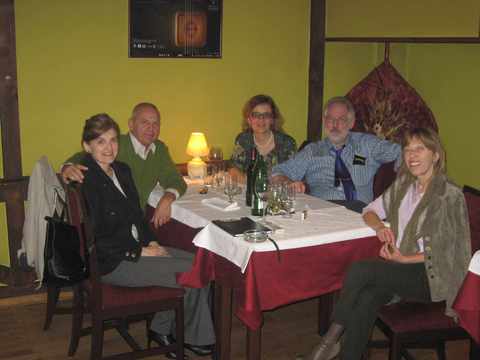


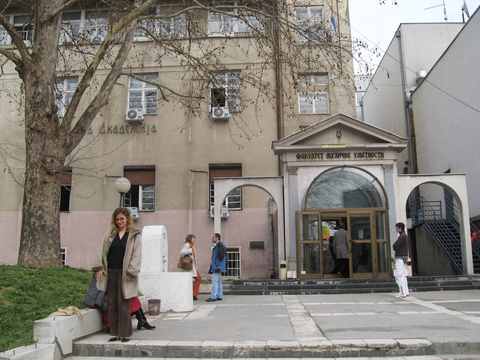


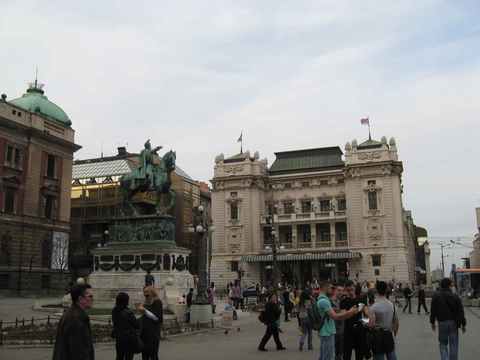

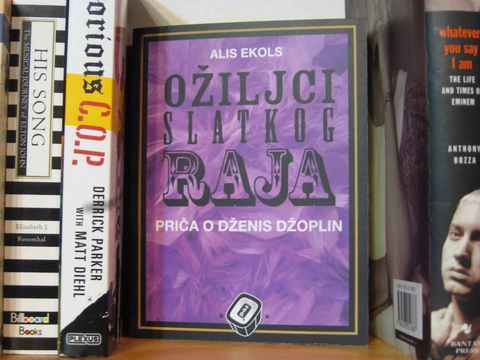 \
\